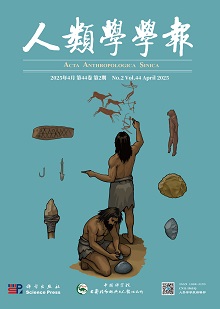The nose, as a key point of human facial morphology, exhibits distinctive features for individual appearance and possesses vital physiological functions simultaneously. Specifically, the size and shape of the nose, as well as the proportional relationship between the nose and the face, are crucial factors in facial aesthetics. Moreover, it is also one of the important indicators of ethnographic classification in some studies. Additionally, the nose plays a very significant role during human breathing as it can guide the airflow, alter the airflow resistance, regulate the body’s water loss, and maintain the heat balance. Current research on nasal morphological variation, both domestic and international, mainly encompasses the following various aspects of nasal morphology: 1) Sex- and age-related differences in nasal morphological variation. Generally, males have larger noses than females, especially in terms of nose width, length, and height. However, nasal angle measurements of men, such as the nasofrontal angle, nasal tip angle, nasolabial angle, and alar slope angle, are smaller than those of women. The distribution of nostril shape also varies significantly between men and women. Regarding age difference, there is a critical period for nose growth in adolescence, approximately from age 9 to 14. 2) Nasal morphological differences of the human nose among various ethnic groups. One of the most notable distinctions is the nostril shape. Essentially, Caucasian people have leptorrhine nostril shape, with larger nose height and smaller width; African people have platyrrhine shape, with smaller nose height and larger width; while Asians have mesorrhine shape with medium nose height and width. 3) Factors that affect nasal morphological variation, such as the head size, climate and environment, genetic factors and inheritance, and so forth; 4) Measurement of nasal morphological parameters, including facial landmarks and measurement methodology, both traditional and developed methods. 5) Related applications of nasal morphology, including those in the fields of disease diagnosis, medical orthopedics, personal identification, forensic investigation, and so on.===By summarizing and understanding the research data and conclusions of related existing literature, this paper provides a brief overview of the nasal morphology-related studies and methods of the measurement of nasal morphology. Firstly, it describes the nasal morphological variation between men and women. Secondly, it demonstrates the nose growth difference during different age periods. Thirdly, it compares the nasal morphological differences among ethnicities. Fourthly, it emulates multiple factors that may affect nasal morphology. Fifthly, it introduces the basic nasal morphological parameters and methods. Finally, it gives a review and prospect of the domestic research on nasal morphology.









